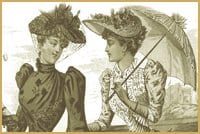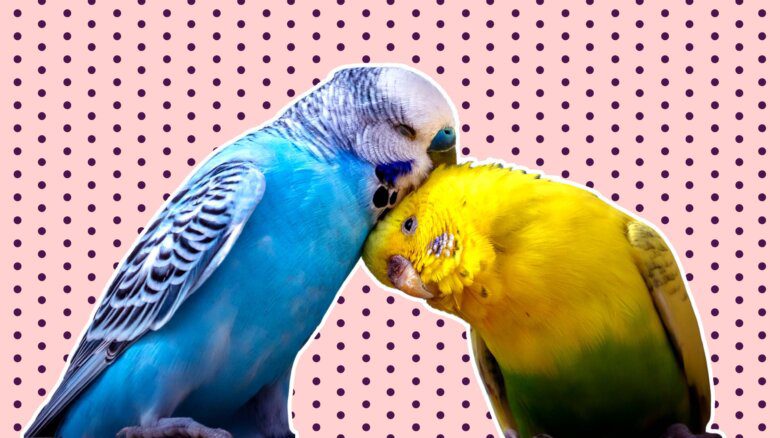It may seem surprising, given Victorian England’s dour reputation, but according to Between Women, the ladies of yesteryear had more in common with the happy sluts of television’s Sex and the City than the sour-faced, non-orgasmic dowagers of Masterpiece Theatre.
“[My book’s] about relationships between women in 19th century England,” says author Sharon Marcus, an associate professor of English and Comparative Literature at New York’s Columbia University. “I focus on England because that’s my specialty, and 19th century England [is] a really important period because it’s seen as a heyday of the nuclear family.”
There’s been “loads of work” published on family history and women’s roles in that era, she notes, but most of it has focused on the idea that women were defined by their relationship to men.
As a result, the romantic and sexual relationships many Victorian women shared with each other fell between the cracks.
According to Marcus, the distinctions between friendships and sexual relationships among Victorian women were subtle.
Women, she says, “routinely used startlingly romantic language to describe how [they] felt about female friends and acquaintances.” And the close friendships they formed among themselves while single often survived into marriage and even maternity.
These women treated friendship and family life as complementary, Marcus continues. Their husbands, in turn, “respected women’s friendships as a component of family life for wives and mothers.”
Beyond maintaining close and often erotic friendships within the confines of conventional marriage, some Victorian women-loving women shucked the heterosexual model altogether and branched out on their own. It was not unheard of in those days for women to dream of marrying each other; some even went through with it.
While researching Between Women, Marcus came across a diary entry in the British Library written by a 10-year-old girl in 1844. In it, the girl recounts a dream she had the previous night of marrying another girl.
“The entries surrounding that one were very banal,” Marcus recalls. “Took a walk. Did my lessons. Then I’m reading about her dream…
“What was most astonishing was that the family read her diary, saved it, preserved it, someone else came along and they published it. This moment didn’t stand out for anybody. It didn’t make them upset. Really, why wouldn’t a 10-year-old girl dream about marrying a woman? It was an amazing moment.”
Marcus also found the love letters of Charlotte Cushman, who ran what Marcus calls a “matrilineal, incestuous, adulterous, polygamous, homosexual household.”
Cushman, Marcus writes in her book, “was one of the most acclaimed and financially successful American actresses of the nineteenth century, best known for playing Romeo in the 1840s. Until her death in 1876, [she] cultivated a public persona as a respectable artist and lived openly with Emma Stebbins.”
Stebbins, also an artist, is best known today for her sculpture Angel of the Waters, which stands in Central Park’s Bethesda Terrace and features prominently in Tony Kushner’s Angels in America.
“Charlotte Cushman is a piece of work,” Marcus says. “She was an actress, a huge personality; very independent and emotionally greedy. She was living in a marital relationship with a woman [Stebbins] and then she went on tour in the United States and started an affair with this younger woman also named Emma [Crow].
“And the younger woman was so in love with her and she kept making more and more demands and Charlotte was trying to keep the whole thing under control. So to explain to her young female lover why she had to back off a little bit she asked, ‘Do you not know that I am already married and wear the badge upon the third finger of my left hand?’
“To me that’s an incredible example of how much these women thought of their relationship as marriage,” says Marcus.
In one of the many letters Cushman wrote to Crow-letters the latter “preserved and bequeathed to the Library of Congress, despite her lover’s many anxious requests to burn them-Cushman writes, “Never did a mother love her child so dearly. Never did Auntie think so sweetly so yearningly of her Niece. Never did Ladie love her lover so intensely.”
“We can see the range of ways that women were referring to their lovers as their spouses,” Marcus points out. “These women clearly understood what their relationships meant to them and made very clear commitments by trying out different labels and appropriating marriage for themselves.
“It wasn’t so much that there was a legal marriage ceremony,” she clarifies, “as women just used the term marriage to describe their relationships. It didn’t seem to cross their minds that marriage could only be for heterosexuals.”
Of course, this doesn’t mean the laws themselves were equally liberal.
“The only way a woman could marry a woman in the 19th century is if one of them dressed as a man,” says Marcus, adding “there are examples of that. I found examples of one woman dressing as a man and after they got married they lived together as women and everyone knew they’d had this marriage ceremony.”
Marcus says she expected to find more evidence of women in same-sex relationships being treated as deviant or transgressive, but “they were really just very organized people leading pretty uneventful lives. I didn’t find any evidence of these women encountering ostracism or creating too many raised eyebrows.”
She did, however, find evidence that lesbians in the 1800s liked their dogs.
“You know what they say about lesbians and their cats?” she asks. “Well, in the 19th century it was lesbians and their dogs. It comes up over and over and over again. These couples who love their dog and give their dog a special name and take pictures of themselves with their dog and write about their dog in their autobiography.”
Asked how much times have changed in terms of society’s willingness to openly honour and embrace lesbian love in all its forms, Marcus points to the New York Times. “They still won’t use the word lover to describe same-sex partners. They still say ‘survived by their companion of many years.'”

 Why you can trust Xtra
Why you can trust Xtra


